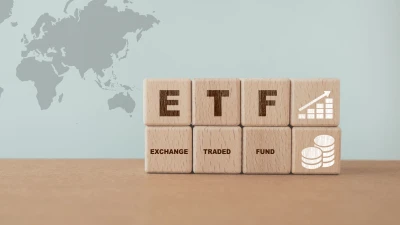The taxing business of funds management
Advisers recommending high income clients invest blindly in unit trusts should beware of tax implications.
Advisers recommending high income clients invest blindly in unit trusts should beware of tax implications.
Unit trusts, and equity trusts, in particular, can have significant tax inefficiencies and may be unsuitable for investors on high mar-ginal tax rates.
Next Financial, a recent arrival to the funds management scene, has just launched an equity fund specifically designed to give investors an equity investment vehicle which is suitable for long term invest-ment and takes into consideration tax issues for high income clients.
Tax inefficiencies can arise for two reasons:
¥ Firstly, equity fund managers aiming to maximise quarterly pre-tax return tend to have a higher stock turnover in their portfolios than if taxation issues were considered.
¥ Secondly, equity funds that do not distribute realised capital gains to investors who redeem their units can lead to double taxation of those gains.
A major taxation advantage of share ownership is that capital gains tax (CGT) is not paid until the shares are sold. In addition, the cost base of the shares is increased by the consumer price index (CPI) for the purposes of calculating CGT.
The benefit of deferring CGT compounds during the period that shares are held and not sold. This is because a return is made on the amount that otherwise would have been paid in tax.
Some of the return will be in the form of dividends and some will be in the form of increased capital gains, as illustrated in this exam-ple:
Two investors invest $10,000 in shares. They both invest in the simi-lar portfolios that have a dividend yield of 3.5 per cent franked to 80 per cent; CGT indexation is at a constant 2.5 per cent. Their portfolios perform equally as well and achieve a capital gain of 10 per cent.
Investor A holds the portfolio and lets the returns compound. Inves-tor B has a portfolio turnover of 100 per cent. Investor B pays CGT at the end of every year and reinvests the remaining gains. These numbers assume that both investors are paying CGT at a rate of 48.5 per cent.
The difference is that Investor B pays CGT on realised gains at the end of every year, but Investor A has only paid CGT at the end of the investment period. As you can see from the table below, the actual value of Investor A's holding after 20 years is $104,100, before pay-ing CGT on selling the shares.
Portfolio turnover leads to a substantial erosion of returns for high tax bracket investors who are investing for the medium to long term.
According to van Eyk Research, the average turnover of major Austra-lian equity funds is 65 per cent per annum. Consequently, a large proportion of their returns are in the form of realised capital gains which are taxable.
This may be attributable to the fact that fund manager performance is measured generally on a pre-tax basis. Pre-tax performance may be an appropriate measure for superannuation funds on a 15 per cent tax rate, but not for investors on the top marginal rate.
Logically, funds invested by high tax rate investors should be man-aged in a different way and separately to funds invested by low tax rate investors. In the USA, there are tax-managed funds which spe-cifically aim to maximise after tax return for high tax bracket in-vestors.
Next Financial's NET 1 fund has a low turnover investment strategy and seeks to minimise the turnover in the fund and hence the amount of realised capital gains distributed to ongoing unit holders.
Distributing capital gains
Unlisted equity trusts in Australia are inefficient generally when it comes to the distribution of capital gains. As mentioned earlier, most trusts do not distribute realised capital gains to investors who redeem their units and so risk causing double taxation of those gains.
This can create a permanent disadvantage or a timing disadvantage de-pending on the circumstances. Paradoxically, it is the low turnover funds that suffer most from this problem.
High tax bracket investors who invest in existing equity trusts may be buying someone else's tax liabilities. Consider this example:
In 1990 a share trust began with a unit price of $1. In 1999, the unit price is $3, however the cost base of the underlying shares in the trust is only $2 per unit; the other $1 per unit is unrealised capital gain.
An investor who buys a unit in that trust today will contribute $3 as capital and receive a unit, which is represented by $2 of capital and $1 of unrealised capital gain.
If our investor is not a taxpayer (for example a charity), this does not matter. However, if the investor is on the top marginal rate of 48.5 per cent, the intrinsic value of the investment is not $3 per unit but $2.515 after the inherent tax liability is taken into ac-count.
The recently launched NET 1 product provides investors with an expo-sure that is more similar to owning the underlying shares. This is done by distributing realised capital gains to redeeming unitholders in proportion to the actual capital gain realised by them at redemp-tion. We see this as a fairer way of distributing to unit holders.
Peter Kennedy is managing director of Next Financial
Table One 5yrs 10yrs 20yrs
Value of initial $10,000 invested
(after tax)
Investor A 15,400 24,900 71,200
Investor B 14,200 20,500 43,100
Annual dividend payment (after tax)
Investor A 400 700 2,400
Investor B 300 500 1,000
Recommended for you
Nuveen has made its private real estate strategy available to Australian wholesale investors, democratising access to a typically institutional asset class.
VanEck is expanding its fixed income range with a new ETF this week to complement its existing subordinated debt strategy which has received $1 billion in inflows this year.
Specialist global equities manager Nanuk has celebrated 10 years of its flagship New World Fund and is actively considering its next possible vehicle.
Australian equities manager Datt Capital has built a retail-friendly version of its small-cap strategy for advisers, previously only available for wholesale investors.











